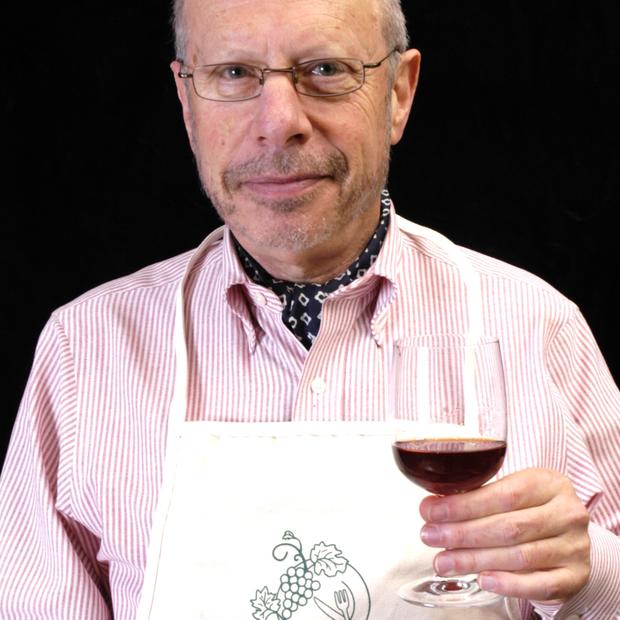The notion that city-dwellers might, could, should grow at least some of their own food has long seemed counter-intuitive. After all, people who live in cities might putter in the garden, but they don't farm.
Gardening is a pleasant pastime that lets you pick a few flowers or a couple of tomatoes from time to time, but farming is altogether different. Farming is work. Hard, sweaty work. We live in cities, don't we, so that we can avoid farming. Farming is something other people do, in other parts of the country and faraway parts of the world.
And yet. Even with encroaching development (housing, roads, shopping centers, offices), there are still 1,800 farms in King County, covering 50,000 acres. Many are close-in: Vashon Island, the Kent Valley and along the Green, Snoqualmie and Sammamish rivers. It was 25 years ago that county voters authorized a Farmland Preservation Program that currently protects 13,000 acres of dairies, cattle and horse farms, row crops, flowers, even Christmas trees nurseries.
And there is a growing movement toward not only the protection but also the revival of farming and of the idea of growing enough to provide a good portion of one’s own food. The lack of a green thumb is no deterrent; ignorance of the fundamentals of agriculture is no excuse. Late summer and early fall are a great time for planting — you can put in brussels sprouts plants or sow such seeds as spinach, turnips or cilantro this month, according to Organic Gardening magazine — and there's help available for city slickers.
Reflecting some of the interest, 21 Acres, a learning center outside Woodinville, will offer three classes under the title “A Local Farm-to-Table Adventure” beginning this Wednesday. Interest was so strong that registration had already closed last week, but the group has set up a waiting list for another possible session. And there are plenty of ways to begin learning: books, videos, magazine articles, to name a few.
Lest we feel smug about the efforts at revival here and the proximity of barns and fields, we should note that there are over four dozen farms within the city limits of our Neighbor to the North, Richmond, British Columbia. Richmond, which is just to the south of Vancouver, is roughly similar in density to Seattle and, although its population of 190,000 is about one third Seattle's. Richome devotes a third of a magnificent 100-acre city park, Terra Nova, to urban agriculture.
The city also employs environmental educators and restaurant chefs to teach schoolchildren the virtues of growing food. “Those aren't weeds,” the park director told a group of grade-schoolers harvesting edible wild greens when I visited a couple of years ago, “just another form of money.”
And there is a beacon of hope on Seattle's Beacon Hill: a new, seven-acre “food forest,” which operates under the umbrella of the Department of Neighborhoods P-Patch program. The same planners had earlier led efforts to establish the Seattle Tilth garden at the Good Shepard Center.
On Vashon Island, we have one embodiment of the genuine, back-to-the-land movement, Kurt Timmermeister. A restaurant owner in Belltown and Capitol Hill (Café Septième) who bought a few acres on the island two decades ago, Timmermeister became a farmer and cheese maker incrementally. His book-length accounts of the process (Growing a Farmer and Growing a Feast) give helpful advice (“don't go into debt”) without sugarcoating the hard work, from morning chores to evening chores. One of his role models was a 95-year-old dairyman who had spent the first half of his life as a practicing accountant. Timmermeister admired the people he met at farmers markets: youthful if not young, healthy, happy. “I wanted to be like them.” So he sold the restaurant and became a farmer.
Craigslist was a huge help (for used tractor parts, for baby pig "weaners"). Two-day-old chicks came in a box, by mail. When it was time for the chickens to be dispatched, the wings got fed to the pigs, "smart, attentive, aggressive, stubborn and charming." Before Timmermeister brought himself to the painful business of killing a pig, he took his reader through the agony and the joy of buying a gun. The dairy prospered as Kurtwood Farm, as it's now known, began to produce a highly regarded, creamy cows milk cheese called Dinah's.
Timmermeister used to open his kitchen table to a dozen visitors for weekly farmhouse dinners, a multi-course feast produced almost entirely from his own land (less so, lately, especially as production of Dinah's cheese has taken off). “I want there to be more small farms, more ways to connect to our food, more links to our cultural past of food raising, preparation and preservation,” he writes. So, back to the garden!
The spiritual godfather of the eat-your-own food movement, and not just in Seattle, was Angelo Pellegrini, a Tuscan immigrant boy who grew up in Gray's Harbor County, on the Washington coast, earned a PhD and became a professor of classics at the University of Washington. Before he died in 1991, he had written a half-dozen books about what comes before the Joy of Cooking: call it the joy of growing. For Pelle, it wasn't “farming” or “gardening;” what came from the earth was a way of life.
"Grow your own, cook your own, make your own wine," he implored his readers and followers (who included Alice Waters, Ruth Reichl and Mario Batali). “You must build a garden.” he mandates, “with a pick and shovel, dig up a portion of your lawn.” In growing your own food, “there will be joy in the harvest, and the greatest pleasure in eating the fruit of your labor.”
Pellegrini did just that, at his home in Seattle's View Ridge neighborhood. You can, too. Even if you live in an apartment building, a flower pot on the window sill can produce edible greens. It's a start.


